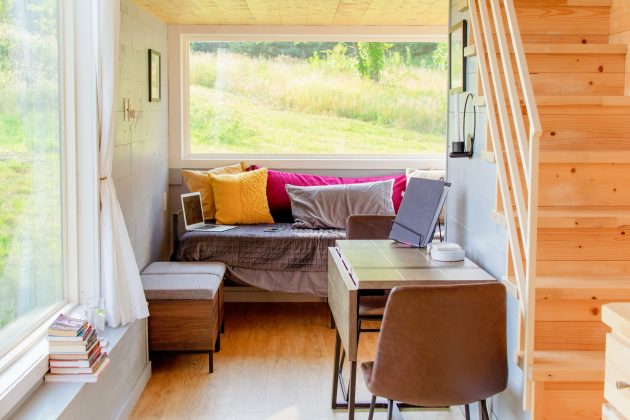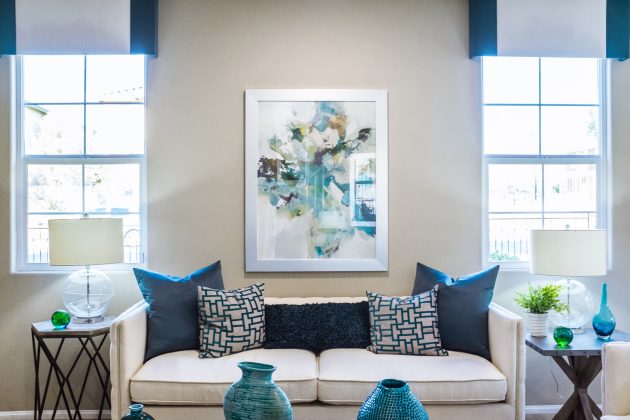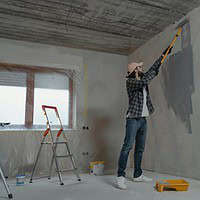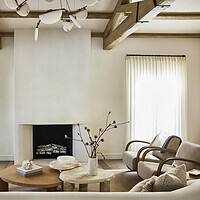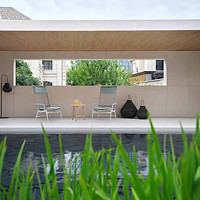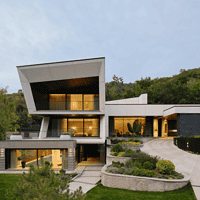When most people think of a tiny home, they picture a quaint little cottage nestled in the woods. However, the reality is that there are many different styles of tiny homes, and the design possibilities are nearly endless. Whether you’re looking to downsize your living space or build a vacation home on a budget, designing a tiny home can be a fun and rewarding challenge. Here are a few things to keep in mind as you get started:
Choose Furniture Well
First, make a list of must-haves. These are the pieces that you need in your home. Once you have your list, measure the dimensions of each item and map out where they will go in your home. This will help you visualize how the furniture will fit and whether or not it’s too big or small for the space.
When working with a limited amount of space, making the most of every square inch is essential. That means carefully considering the furniture arrangement. One way to do this is to choose multifunctional pieces. For example, an ottoman that doubles as a coffee table or a daybed can be helpful for lounging and sleeping.
Think of Mobility
If you’re planning to move your tiny home, you’ll need to think about portability. That means choosing materials that are lightweight and easy to transport. For example, instead of using drywall, opt for plywood paneling. And instead of a traditional shingled roof, consider a metal roof. These materials are much easier to move and won’t add much weight to the structure.
There are companies majoring in portable, eco-friendly houses. They also utilize modern engineering techniques in their house constructions. These companies specialize in building homes that are sustainable and portable. The team at Off With The Grid explains that the structures need to be mechanically robust. Thus, target experts who are picky with the type of materials they use. Consider going through the company’s website to learn more about its operations.
Think About the Layout
In a tiny house, the layout is everything. It can be helpful to sketch out a few different designs and see what works best for your needs. Pay attention to how you’ll use each space and what furniture you’ll need in each area. For example, the kitchen will need room for a fridge, a sink, and prep space. The bedroom will need room for a bed and storage. And the living room will need seating and perhaps a TV.
Be mindful of the flow of traffic as you’re arranging furniture. You don’t want to create bottlenecks in the space. There should be a clear path from one room to the next. And if possible, create an open concept layout so that the area feels more significant.
Get Creative with Storage
When you’re living in a tiny home, storage is vital. You’ll need to be creative to make the most of your space. One way to do this is to use underutilized spaces, like the space under the stairs or over the fridge. You can also get creative with your furniture, using a coffee table with built-in storage or a Murphy bed that folds up into a closet. Also, it’s important to get rid of excess stuff.
Think of Natural Lighting
Another essential aspect of small home design is lighting. Since you’ll have limited space, you’ll want to ensure that the light coming into your home is as efficient as possible. That means using large windows and skylights to let in natural light. You can also use mirrors to reflect light and make a space feel brighter and more open.
Translucent roofing materials are significant in small home designs because they allow natural light to enter the space. It makes the area feel brighter and more open. Additionally, it reduces the need for artificial lighting, saving you money on your energy bill.
Choose the Right Painting Colors
The right paint colors can make a big difference in a small space. When choosing paint colors, it’s essential to consider how the color will affect the feeling of the room. For example, light colors make a space feel more open and airy, while dark colors can make a space feel more intimate and cozy.
It’s essential to think about the overall interior design because it can make a big difference in how your tiny home looks and feels. Thus, choose the right color mix for the different items in the room from furniture, ceiling, and wall paintings. Sometimes, you can consult with interior designers on the best color-matching.
When designing a tiny home, there are a few things to keep in mind. First, think about the layout of the space and how you want the rooms to flow into each other. Second, get creative with storage and make use of underutilized spaces. Remember to hire professionals for the design of a modern and eco-friendly house.

